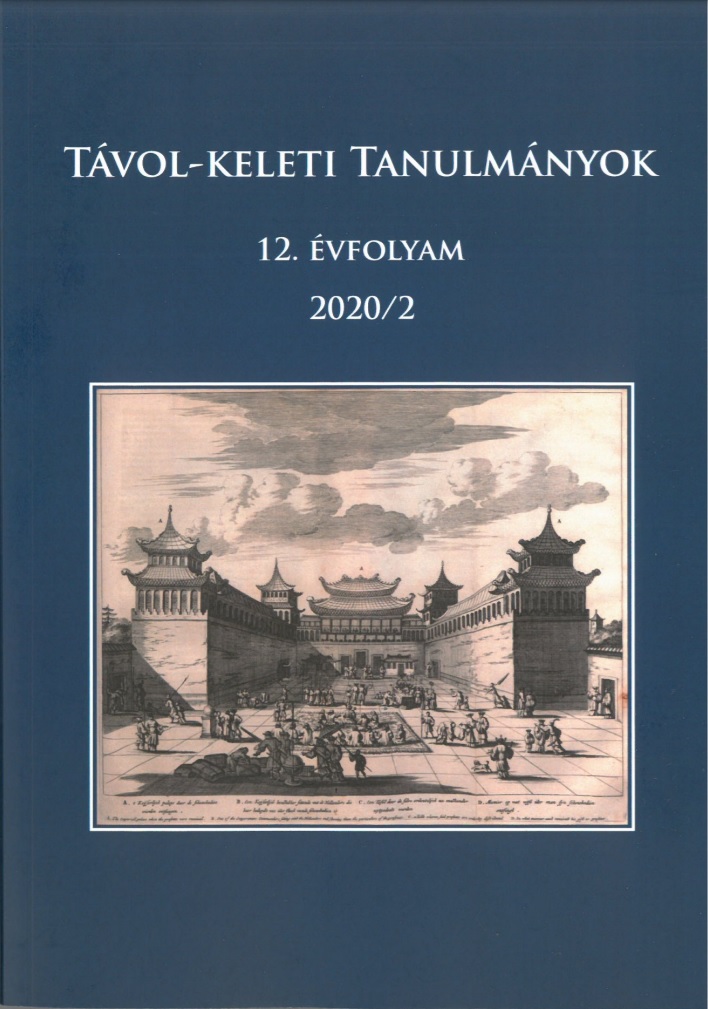A Ming-kori fegyverhasználat és fegyvertartás szabályozása a Da Ming lü-ben rögzített törvények alapján
Megjelent 2021-07-12
Kulcsszavak
- kínai harcművészet-történet,
- kínai hadtörténet,
- kínai jogtörténet,
- Da Ming lü,
- Ming-dinasztia
- fegyvertartás,
- fegyveres erőszak ...Tovább
Hogyan kell idézni
Copyright (c) 2021 a szerző(k)

This work is licensed under a Creative Commons Attribution-NonCommercial 4.0 International License.
Absztrakt
A Ming-dinasztia uralmának időszakát a kínai hagyomány a harcművészetek aranykoraként tartja számon. Az elmúlt évek harcművészet-történeti kutatásai megerősítették, hogy a fegyveres fizikai erőszak jelentős mértékben volt jelen a kor társadalmának mindennapjaiban, többek között gyakori haramiatámadások, klánháborúk, helyi felkelések formájában. Ugyanakkor kevés ismerettel rendelkezünk arról, hogy a Ming jogrendszer hogyan viszonyult a fegyverek és a fegyveres erőszak általános jelenlétéhez a társadalomban. Jelen tanulmány célja, hogy a Da Ming lü 大明律 [A Ming-dinasztia törvénykönyve] vonatkozó törvénycikkelyeinek elemzése révén megvizsgálja a fegyveres erőszak törvényi szankcionálását és a civil fegyvertartás szabályozását a Ming-korban.
Hivatkozások
- Liu, Weiqian 劉惟謙 (ed.) 2002. „Da Ming lü 大明律 [A Ming-dinasztia törvénykönyve].” In: Johnson, Wallace (ed.): Ming Code. Journal of Asian Legal History.
- Alabaster, Ernest 1899. Notes And Commentaries On Chinese Criminal Law. London: Luzac & Company.
- Bian, Li 卞利 2000. „Mingdai Huizhou de minshi jiufen yu minshi susong 明代徽州的民事纠纷与民事诉讼.” Lishi Yanjiu 历史研究 2001/1: 94–105.
- Bowman, Paul 2015. Martial Arts Studies; Disrupting Disciplinary Boundaries (Disruptions). London–New York: Rowman & Littlefield International.
- Burkart, Eric 2016. „Limits of Understanding in the Study of Lost Martial Arts.” Acta Periodica Duellatorum 4/2: 5–30.
- Chan, Hok-Lam 2009. „Ming Taizu's ’Placards’ on Harsh Regulations and Punishments Revealed in Gu Qiyuan's ’Kezuo zhuiyu’.” Asia Major 22/1: 13–39.
- Fairbank, John King – Goldman, Merle 2006. China, a new history. Cambridge, Massachusetts–London, England: Harvard University Press.
- Farmer, Edward L. 1993. „The Great Ming Commandment (Ta Ming Ling): An Inquiry into Early-Ming SocialLegislation” Asia Major 6/2: 181–199.
- Farmer, Edward L. 1995. Zhu Yuanzhang and Early Ming Legislation: The Reordering of Chinese Society Following the Era of Mongol Rule. Leiden: Brill.
- Godley, Michael R. 1994. „The end of the queue: hair as symbol in chinese history.” East Asian History 8: 53–72.
- Han, Sangdon 한상돈; Jo Jiman 조지만 2015. „The Study on the Period of Responsibility for Crimes in the Great Ming Code.” Korean Journal of Legal History 51: 69–98.
- Han, Sangkwon 한상권 2019. „Penal System and Theory of Punishment of the Dang Dynasty’s Code and the Ming Dynasty’s Code.” Korean Journal of Legal History 59: 197–199.
- Han, Sangkwon 한상권 2019. „Penal System and Theory of Punishment of the Dang Dynasty’s Code and the Ming Dynasty’s Code.” Korean Journal of Legal History 59: 197–199.
- Head, John W. et al. 2005. Law Codes in Dynastic China. Durham: Carolina Academic Press.
- Henderson, Dan Fenno 1980. „Chinese Influences on Eighteenth-century Tokugawa Codes.” In: Cohen, Jerome Alan et al. (eds.): Essays on China's Legal Tradition. New Jersey: Princeton University Press.
- Jiang, Yonglin 2010. „In the Name of ’Taizu’: The Construction of Zhu Yuanzhang's Legal Philosophy and ChineseCultural Identity in the ’Veritable Records of Taizu’.” T'oung Pao. 96, 4/5: 408–470.
- Johnson, Wallace (trans.) 1997. The Tang Code, Volume II. Specific Articles. New Jersey: Princeton University Press.
- Langlois Jr., John D. 1993. „The Code and ad hoc Legislation in Ming Law.” Asia Major 6/2: 85–112.
- Li, Jiyuan 李吉远 2018. Mingdai Wushushi Yanjiu 明代武术史研究 [A Ming-kori harcművészet-történet vizsgálata]. Zhongguo Shehui Kexue Chubanshe 中国社会科学出版社.
- Liu, Changjiang 刘长江 2005. „Mingdai fazheng tizhi shulun 明代法政体制述论” Sichuan Shifan Daxue Xuebao 四川师范大学学报6: 4–43.
- Lorge, Peter 2012. Chinese Martial Arts: from antiquity to the twenty-first century. New York: Cambridge University Press.
- MacCormack, Geoffrey 1996. The Spirit of Traditional Chinese Law. Athens: University of Georgia Press.
- MacCormack, Geoffrey 2006. „The Legalist School and its Influence upon Traditional Chinese Law.” Archives for Philosophy of Lawand Social Philosophy 92/1: 59–81.
- Peers, Chris 1997. Late Imperial Chinese Armies 1520–1840. [Osprey Military Men-At-Arms 307.] London–Auckland–Melbourne: Osprey.
- Waltner, Ann 1996. „Breaking the law: Family violence, gender and hierarchy in the legal code of the Ming dynasty.” Ming Studies 1996/1: 29–43.
- Wang, Xin王昕 2010. „Mingdai liuke gei shizhong zhidu ji qi xiandai qishi 明代六科给事中制度及其现代启示” Liaoning Daxue Xuebao 辽宁大学学报 2010/4: 63–69.
- Zhou, Wei 周纬 2015. Zhongguo bingqishi 中国兵器史 [A kínai fegyverek története]. Zhongguo youyi chuban gongsi 中国友谊出版公司.

